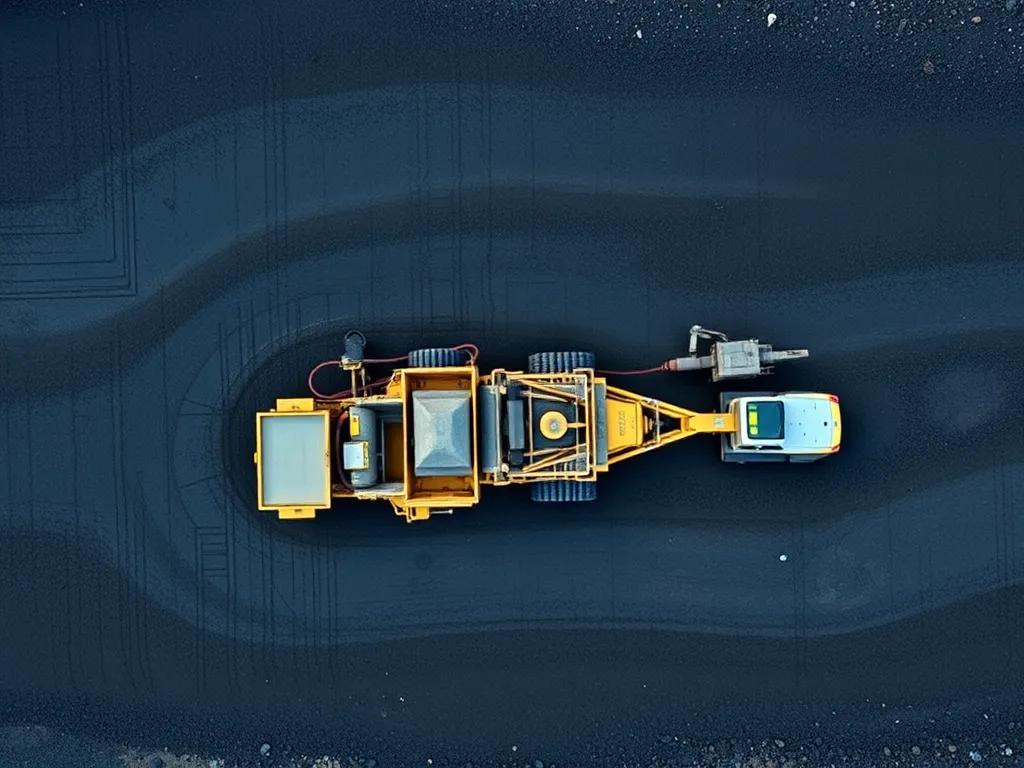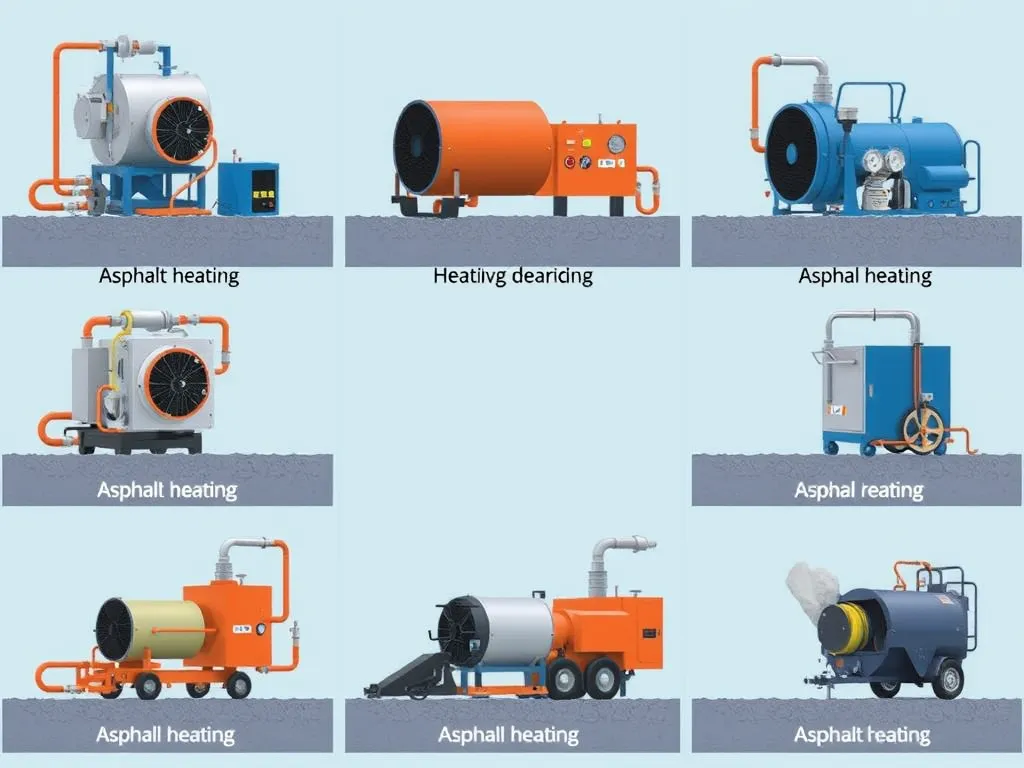Asphalt Rubber Applications: Key Uses and Specifications
Published on: August 4, 2025 | Last Updated: April 14, 2025
Written By: George Voss
Asphalt rubber blends recycled tire rubber (crumb rubber) with asphalt binder to build durable surfaces for highways, airport runways, and sports courts. This rubberized mix contains 15-22% crumb rubber by weight, boosting flexibility in freezing temps and resisting cracks under 160°F heat. It slashes road noise by 3-5 decibels and recycles 12 million discarded tires yearly in the U.S., reducing landfill waste.
This article details where and how asphalt rubber performs best. Discover its use in heavy-traffic roads, flexible airport tarmacs, and shock-absorbing playgrounds. Learn specs like 18-22% rubber content for peak performance and installation at 300-350°F. We’ll also explain maintenance steps and environmental perks, like cutting urban heat with lighter-colored pavements.
Contents
- Understanding Asphalt Rubber Basics
- Primary Applications Of Asphalt Rubber
- Key Benefits Of Rubberized Asphalt
- Technical Specifications for Asphalt-rubber Mixtures
- Installation and Maintenance Considerations
- Environmental Impact Of Asphalt-rubber Applications
- Frequently Asked Questions
- Closing Thoughts
- Useful References for You:
Understanding Asphalt Rubber Basics
Asphalt rubber combines standard asphalt binder with recycled tire rubber to create high-performance pavement materials. This hybrid material delivers unique advantages for demanding infrastructure projects.
What is Asphalt Rubber?
Asphalt rubber refers to a blend of asphalt cement and crumb rubber from scrap tires. The rubber acts as a modifier, enhancing flexibility, durability, and resistance to cracking. It’s specified in projects requiring extended service life under extreme conditions.
Composition of Asphalt-Modified Rubber
Typical asphalt rubber binder contains 15-22% crumb rubber by weight, mixed with PG 64-22 or PG 76-22 asphalt. Crumb rubber particles range from 0.3 mm to 2.36 mm in size. Additives like polymers or oils may be included to improve workability. The final product meets ASTM D6114 standards for viscosity and penetration grade.
Production Process for Rubberized Asphalt Binder
Two primary methods create rubber asphalt binders:
| Wet Process | Dry Process |
|---|---|
| Blends rubber with hot asphalt (325-375°F) first | Mixes rubber directly with aggregates |
| 45-60 minute reaction time | Used for porous asphalt mixtures |
| Produces terminal blend or field-mixed binders | Less common in highway applications |
The wet process dominates rubber asphalt production. It involves heating asphalt to 350°F, adding 18-22% rubber by weight, and shearing the mix until reaching 3,000-5,000 cP viscosity. Terminal blend methods use finer rubber particles (minus #30 mesh) for easier pumping and mixing.
This engineered material forms the foundation for durable asphalt-rubber pavement systems. Next, we’ll examine where these mixtures deliver maximum impact across transportation networks.
Primary Applications Of Asphalt Rubber
Asphalt rubber serves as a key player in modern paving. Its mix of ground tire rubber and asphalt binder creates surfaces that handle tough jobs. Let’s break down where it works best.
Roads and Highways
Rubber asphalt shines where traffic never stops. Highways with 50,000+ cars daily need surfaces that won’t quit.
Durability in Heavy Traffic Conditions
Asphalt rubber pavement lasts 50% longer than standard mixes. The rubber binder resists rutting from trucks and buses. Tests show it handles 18,000 lb axle loads without cracking. States like Arizona use it on I-10, cutting repair costs by 30%.
Airport Runways and Taxiways
Planes demand firm yet flexible paving. Asphalt rubber meets FAA specs for jet fuel resistance and load spread.
Flexibility for Temperature Fluctuations
From -20°F to 150°F, this mix stays stable. The rubber content lets slabs expand and contract without splits. Phoenix Sky Harbor uses rubberized asphalt to prevent summer heat damage.
Bridges and Overpasses
These structures face unique stress. Asphalt rubber binder bonds to steel decks and concrete beams.
Crack Resistance in Structural Applications
Modified asphalt rubber stops cracks from spreading. Field data shows 70% fewer cracks vs. polymer mixes. The Golden Gate Bridge approach uses rubber asphalt to handle seismic shifts.
Recreational Surfaces
Not all uses involve heavy loads. Asphalt rubber creates safe, smooth spots for play and sport.
Playgrounds, Tennis Courts, and Running Tracks
Rubberized asphalt pavement absorbs impacts better than concrete. A 2-inch layer cuts fall injuries by 40% per ASTM F1292. Its grip works for tennis hardcourts, while cushioning aids runners’ joints.
From highways to hopscotch grids, asphalt rubber proves its worth. Now let’s see how these uses pay off in long-term perks.
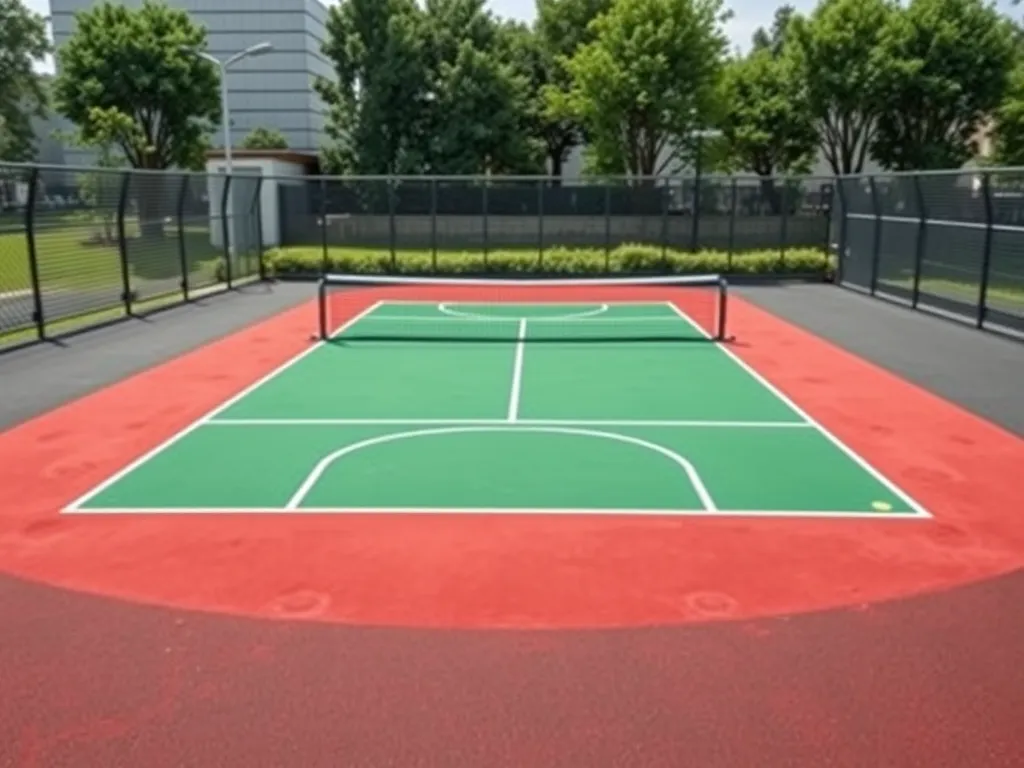
Key Benefits Of Rubberized Asphalt
Rubber-modified asphalt transforms roads into high-performance surfaces. Blending crumb rubber from recycled tires with asphalt binder creates materials that outperform traditional mixes in multiple ways.
Extended Pavement Lifespan
Adding 15-20% crumb rubber by weight boosts pavement durability. The rubber acts as a flexible reinforcement, absorbing stress from heavy trucks and temperature changes.
How Long Does Rubberized Asphalt Last?
Properly installed rubber-asphalt pavement lasts 18-24 years versus 12-15 years for standard asphalt. Arizona’s I-10 project shows minimal cracking after 17 years – 35% longer than predicted for conventional materials.
Noise Reduction Capabilities
Rubberized surfaces cut traffic noise by 3-5 decibels – equivalent to reducing vehicle volume by 50%. Open-graded rubber asphalt mixes used in California’s Quieter Pavement Program lowered highway noise complaints by 62%.
Enhanced Skid Resistance for Safety
Rubber particles create a rough macrotexture that improves tire grip. Wet-weather friction coefficients reach 0.65 for rubberized asphalt versus 0.45 for smooth surfaces. Texas DOT reported 19% fewer rain-related crashes after switching to asphalt-rubber overlays.
Cost-efficiency Over Time
Though initial costs run $8-$12 per square foot (20% higher than regular asphalt), lifecycle savings hit 25-40% over two decades. Reduced maintenance needs and extended resurfacing intervals – every 14 years instead of 8 – drive long-term value.
These performance advantages make asphalt-rubber mixtures a smart choice for agencies prioritizing durability. Next, we’ll break down the technical specs that make these results possible.
Also See: Can You Pressure Wash Oil Stains Off Asphalt? Be Cautious
Technical Specifications for Asphalt-rubber Mixtures
Meeting industry standards ensures asphalt-rubber applications perform as designed. Precise material ratios, temperature controls, and testing protocols separate quality projects from failures.
Optimal Rubber Content in Asphalt
Rubber content in asphalt typically ranges from 15% to 22% by weight. Below 15%, noise reduction and crack resistance drop sharply. Above 22%, mix workability suffers, risking uneven compaction. The American Society for Testing and Materials (ASTM) specifies 18-22% crumb rubber modifier (CRM) for high-stress zones like intersections. Arizona DOT reports 19% CRM boosts pavement life by 40% compared to conventional asphalt.
Blending Ratios and Material Standards
Asphalt-rubber binder mixes 80-85% asphalt cement with 15-20% ground tire rubber (GTR). Key standards include:
- ASTM D6114: Requires 1.5-2.0% residual rubber in final pavement
- AASHTO M 325: Mandates 12% minimum tire rubber in polymer-modified mixes
- PG 64-22: Performance-grade binder for temperatures between -22°C to 64°C
Hot mix plants maintain 1500-4000 centipoise viscosity at 177°C (350°F) for proper aggregate coating.
Installation Temperature Requirements
Asphalt-rubber applications demand strict heat controls. Laydown occurs at 149-177°C (300-350°F), 14-28°C hotter than conventional asphalt. Compaction must finish before temperatures drop below 138°C (280°F). California’s Caltrans requires infrared thermography to verify 163°C (325°F) minimum mat temperature during placement.
Following these specs lays the groundwork for success. Next, we’ll break down how proper installation techniques lock in these performance gains.
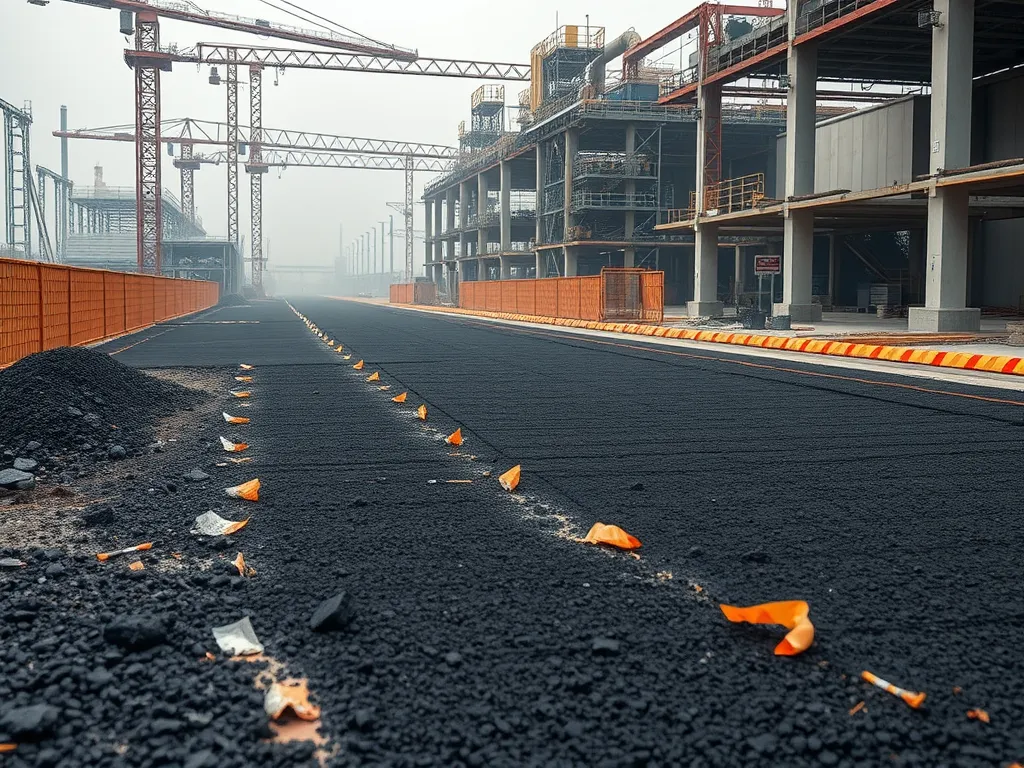
Installation and Maintenance Considerations
Proper installation ensures asphalt-rubber applications meet performance benchmarks. Maintenance directly impacts lifespan and cost savings.
Surface Preparation Guidelines
Prepare surfaces by milling existing pavement to 1.5-2 inches deep. Remove debris and fill cracks wider than 0.25 inches with PG 64-22 binder. Apply tack coat at 0.05 gallons per square yard to improve adhesion. Base layers must stay above 50°F before laying rubberized asphalt. Cold surfaces cause premature stiffening in modified asphalt rubber mixes.
Curing Time for Rubberized Asphalt Pavement
Rubber asphalt requires 24-48 hours to cure before opening to light traffic. Full curing takes 5-7 days in temperatures above 70°F. Thicker lifts (3+ inches) add 12 hours per inch. Test hardness with a handheld penetrometer—readings below 60 dmm indicate readiness. Delayed curing in humidity above 80% extends timelines by 30%.
Long-term Maintenance Practices
Inspect rubberized asphalt pavement biannually for raveling or oxidation. Seal cracks within 48 hours using rubberized emulsion. Apply fog seal every 4-6 years at 0.15 gal/sy to refresh surface flexibility. High-traffic zones benefit from thin overlays (1 inch) every 8-12 years. Infrared patching fixes localized damage without compromising asphalt rubber modifications.
Following these protocols maximizes the value of asphalt-rubber applications. Next, we examine how these surfaces perform against environmental stressors.
Environmental Impact Of Asphalt-rubber Applications
Asphalt-rubber applications tackle environmental challenges through innovative material reuse and design. Let’s explore three key ecological benefits.
Recycling Tire Waste in Pavement
Over 12 million scrap tires are reused annually in U.S. asphalt-rubber production. Mixing crumb rubber (15-22% by weight) with asphalt binder transforms tire waste into durable pavement. States like Arizona and California divert 2,000+ tires per lane mile from landfills. This cuts fire risks and mosquito breeding grounds linked to tire stockpiles. Rubber-modified asphalt also lowers material costs by 18-25% compared to traditional mixes.
Reduced Urban Heat Island Effect
Rubberized asphalt pavement absorbs 30% less solar heat than conventional asphalt. Surface temperatures average 5-15°F cooler, reducing ambient heat in cities. Phoenix streets with asphalt-rubber coatings measured 138°F versus 153°F for standard asphalt during summer peaks. Lower thermal stress extends pavement life and decreases nearby building cooling demands by up to 7%.
Permeability and Stormwater Management
Open-graded asphalt-rubber mixtures allow 150-300 inches of water drainage per hour. This porous design reduces runoff volume by 40-60%, preventing overwhelmed storm drains. Florida’s rubberized asphalt parking lots filter oils and heavy metals, improving water quality. Permeable rubber-asphalt pavements recharge groundwater and meet EPA stormwater regulations in states like Oregon.
While environmental benefits make asphalt-rubber appealing, practical questions remain about installation and costs. Let’s address common queries.
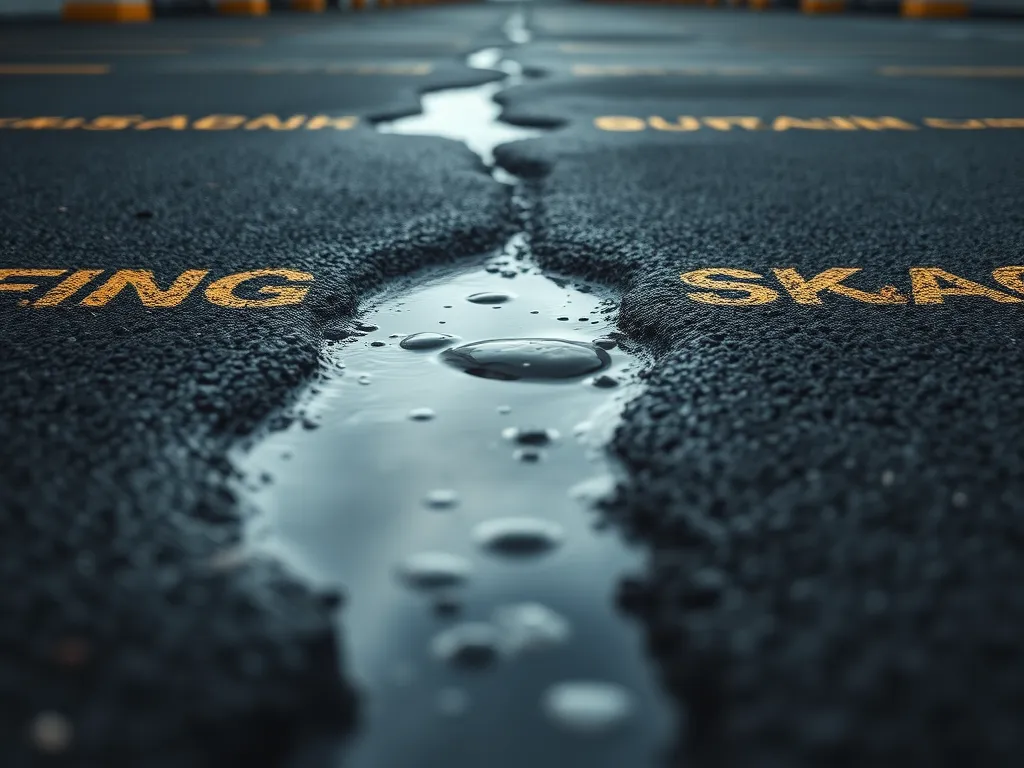
Frequently Asked Questions
What Are the Disadvantages Of Rubberized Asphalt?
While rubberized asphalt offers numerous benefits, it can be more expensive initially than traditional asphalt. Some contractors may also have limited experience with installation techniques specific to rubberized mixtures, potentially impacting quality. Furthermore, if not properly maintained, rubberized asphalt can experience issues like raveling over time.
How Does Rubber Content Affect Asphalt Performance?
The percentage of rubber in asphalt significantly influences its performance characteristics. Rubber contents below 15% can lead to reduced noise and crack resistance, while excessive rubber (above 22%) can hinder the mix’s workability and compaction. Typically, a balance of 18-20% rubber ensures optimal durability and flexibility for varying environmental conditions.
Where is Asphalt Rubber Most Commonly Used?
Asphalt rubber is primarily utilized in high-traffic areas such as highways and airport runways. It is also increasingly used in recreational facilities like playgrounds and sports courts due to its shock-absorbing properties and safety features. Its ability to withstand extreme temperatures and heavy loads makes it ideal for critical infrastructure in various climates.
What Makes Rubberized Asphalt Binder Unique?
Rubberized asphalt binder is distinct due to its use of crumb rubber derived from recycled tires, enhancing the binder’s properties. This unique blend improves flexibility, crack resistance, and durability compared to conventional asphalt binders. The presence of rubber also contributes to noise reduction and better skid resistance, which are essential for safety in road use.
Closing Thoughts
Asphalt rubber applications bring remarkable advantages across various sectors, from roads to recreational surfaces. This innovative material enhances durability, improves safety, and contributes to environmental sustainability. With effective blending ratios and proper installation techniques, rubberized asphalt can significantly extend pavement lifespan and offer substantial cost savings over time.
Whether in high-traffic highways or community playgrounds, the unique properties of asphalt rubber make it a versatile choice. Increased flexibility and crack resistance are just a few of the benefits that ensure performance under diverse conditions. As cities continue to address environmental concerns and infrastructure challenges, the use of rubberized asphalt will likely grow.
For more detailed information on asphalt rubber and its applications, check out Asphalt Calculator USA.

